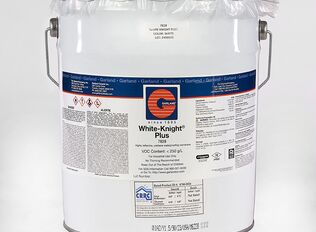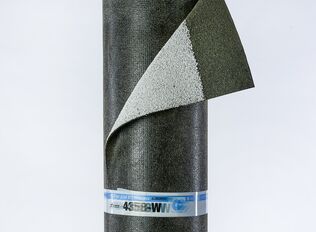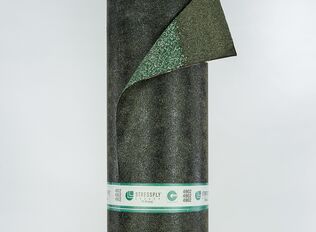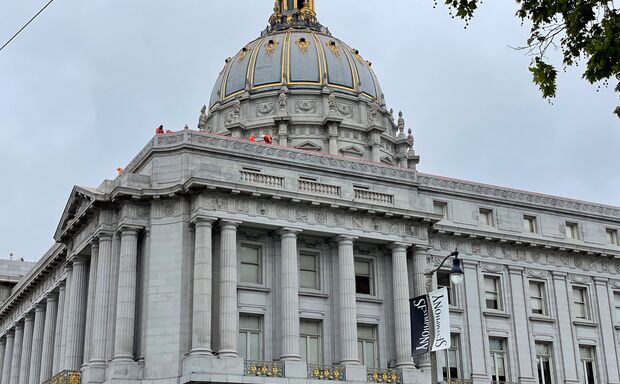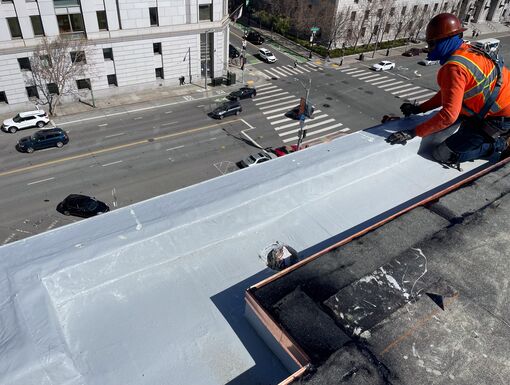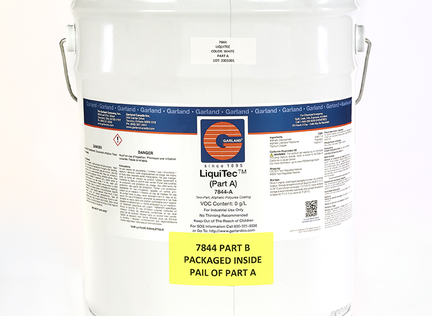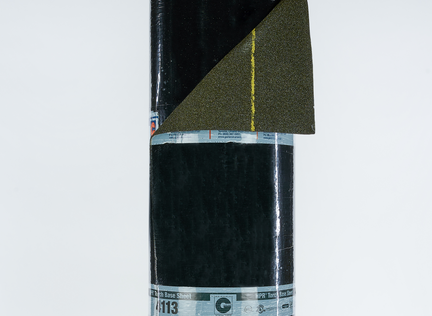Low-odor, energy-efficient, easy to maintain
The Liquitec system delivered a number of benefits for San Francisco City Hall and the DPW:
-
Low-odor – the water-based low-VOC system did not create any smells or other disruptions that would disturb ongoing weddings or other events
-
Aesthetics – the monolithic finish of the Liquitec system created a visually appealing look for the roof, which is visible from surrounding skyscrapers.
-
Improved energy efficiency – the highly-reflective Liquitec coating is expected to reduce cooling needs within the City Hall building.
-
Landfill waste – since there was no tear-off required, the project kept an estimated 3 tons of waste from landfills, while saving significant labor that would have been required to sort debris for recycling.
The Garland system will extend the life of the roof an estimated 10-15 years, at which time the surface can be reactivated and resurfaced, again with minimal disruption and waste. Said Jay Mulligan, “Playing our part to preserve the architectural character of San Francisco is a responsibility we take very seriously. Garland was thrilled to be selected as DPW’s roofing partner for this project, and as a company that’s been around since 1895 ourselves, we look forward to supporting The People’s Palace into its next hundred-plus years.”
